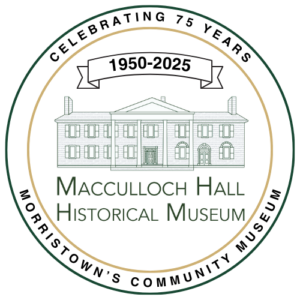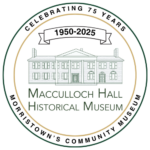
Kitchen
You are standing in the oldest part of Macculloch Hall. The kitchen predates the Revolutionary War. When the Maccullochs built their large brick house, the existing stone farmhouse dating to 1765 was lowered to the stone kitchen level. Macculloch Hall was built on top of this sturdy foundation. The floorboards and hearth stones are original. The family kitchen remained in the basement throughout the 20th-century.
Mrs. Macculloch employed a cook. She was active in the kitchen. Morristown merchants would have made deliveries to the once much larger kitchen through a side door opening into the east yard. Servants, enslaved people, boarding students, and farm hands would have eaten here. Cato, Susan, Elizabeth, Emma, William, Henry, and Helen, the people enslaved at Macculloch Hall, may have also slept in the kitchen, but we do not know for sure.
Meals were delivered to the dining room one floor above using a dumbwaiter.
A fifth-generation family member recorded his memories of Victor and Eugenie, the butler and cook, who served the family in the 1920s. He wrote that Eugenie “…ruled the kitchen and the adjoining rooms downstairs with an iron hand, including terrorizing us boys with her gallic fury. She was an incomparable cook who would slide the fragrant dishes onto the dumbwaiter which Victor would then wrestle up to the dining room level and instantly appear as if by magic from behind the dining room screen with whatever delicacy might be the order of the day.”
Cooking, candle making, and washing were all likely done in this room, in addition to cooking daily meals and preserving food for storage.
Candles would have been made using a tin candle mold like the one on display. There is a 36-candle mold on the floor nearby. As you feel the tin candle mold, think about how hot wax was poured into it and a wick inserted. When the candles set, they were carefully pulled from the mold.
We know that a lot of baking happened at Macculloch Hall thanks to Mrs. Macculloch’s recipe books. Cast iron muffin pans, like the one on display, would have been used. Feel the weight of the pan. Many pots and pans used in the kitchen were very heavy made of brass, copper or iron.

